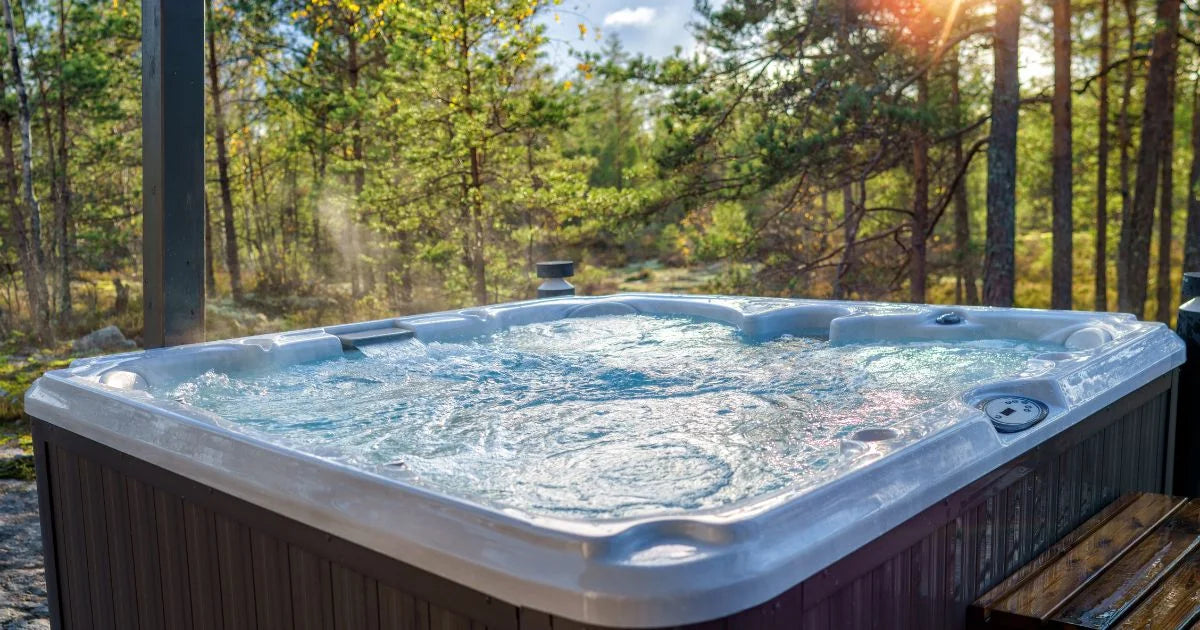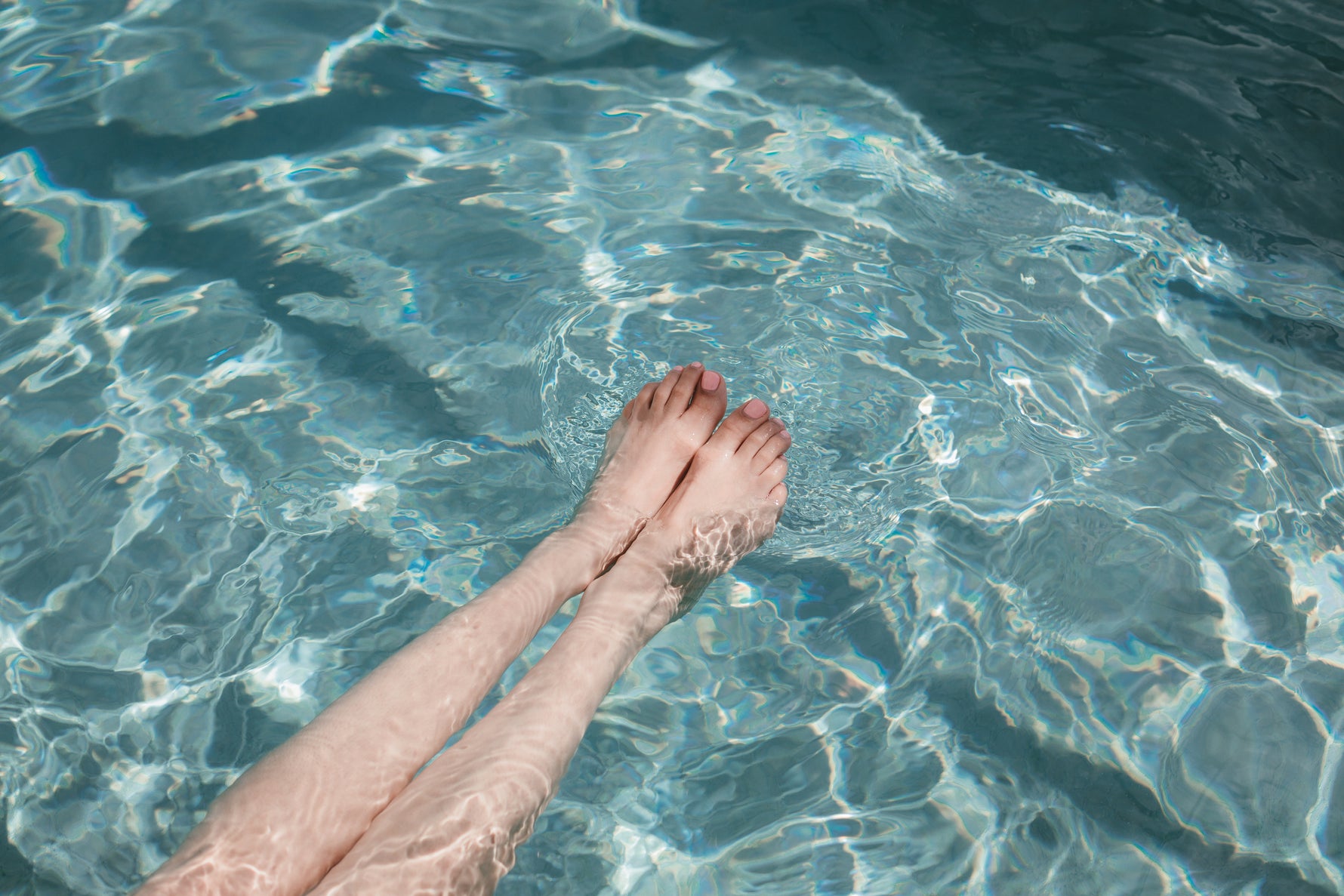
Is Bromine Dangerous? Separating Hot Tub Facts from Fiction
Hello, hot tub enthusiasts. It’s time to debunk some common misconceptions about hot tubs. Identify facts from fiction. Determine what’s right, what's wrong, and what's downright head-scratching. In this episode (blog), we’ll be exploring: Is bromine dangerous?
First, what is bromine, anyway?
Bromine (chemical compound: Br) is a reddish-brown, volatile liquid chemical element that's a part of the halogen group on the periodic table. It's probably best known for its strong smell and is considered an intermediate between chlorine (Cl) and iodine (I) when its properties are examined.
Bromine has many applications, but it's most often used to sanitize water in pools, spas, and hot tubs. Its ability to safely control microorganisms and stabilize environments is also useful in other important areas. For instance, bromine-based ingredients are used in some pharmaceuticals and flame-resistant materials.
But Wait... Is Bromine Dangerous?
Both the EPA and Health Canada have approved sodium bromide as safe to use as a hot tub sanitizer. It's sold in hardware stores across the country.
The bromine you buy for your hot tub is not pure bromine; it’s a stable compound designed to slowly release a controlled amount of bromine into the water
Of course, just like other household cleaning products in your home, it’s important to handle it with care. When it comes to handling bromine carefully, you need to:
-
Read the label and follow the instructions for safe use.
-
Store it in a cool, dry place out of the reach of sunlight.
-
Keep it properly sealed in its original container.
-
Use gloves while handling.
-
Avoid inhaling the fumes.
-
Make sure that the chemical dissolves fully before you use the hot tub to prevent eye and skin irritation.
With proper use, products containing bromine are no more dangerous than other common household chemicals. Millions of people use bromine to sanitize their hot tubs each and every year!
Why Bromine is a Popular Choice for Hot Tub Owners
When it comes to keeping your hot tubs clean, bromine is a top-tier choice.
Unlike chlorine, bromine doesn't lose its potency when introduced to warmer water temperatures; rather, bromine continues to work, even when the water is quite hot.
This means your hot tub stays cleaner, longer, and you have fewer concerns about your water getting gross in the middle of a well-deserved dip.
Plus, when used properly, it's a lot gentler on the skin and eyes – which is perfect for when you need a truly relaxing, long, deep soak in the hot tub.
Listen... nobody wants to take a dunk in a greenish, dirty hot tub. Doesn't sound very relaxing at all, does it? This isn't a Ninja Turtles spinoff, and we doubt you'll pop back out of that with any special abilities. In fact, it's far more likely to compromise your health.
That's why it's so important to keep your hot tub sanitized; not just for you, but for the longevity of the hot tub itself!
Bromine vs. Chlorine: A Side-by-Side Comparison
When you're looking to open the hot tub for the season, first, you've got to think about hot tub sanitation. Usually, chlorine and bromine are the top two choices. But how do you choose between the two? Chlorine is usually the one most people think of, but bromine is a strong contender. Should we break it down?
Sanitization Effectiveness
Hands down, bromine is the heavyweight champion when it comes to holding up in high-temperature water. It stays active much longer than chlorine, which is more likely to break down in higher temperatures. Don't get us wrong; chlorine is great for pools, but bromine is the top choice when you're operating a hot tub.
Managing Foul Odor & Irritation
Have you ever opened a pool or hot tub with chlorine – you know that familiar, harsh, chemical smell? Bromine doesn't have that problem. It's milder and isn't likely to burn/sting your skin and eyes, which means you can enjoy the water without feeling irritated.
pH Balance & Stability
Bromine is excellent when it comes to pH stability. It's more effective across a wider range of pH, which makes it so much easier when it comes to balancing out your hot tub. Chlorine, on the other hand, is much more sensitive to changes in pH and needs more frequent adjustments and must be monitored more closely.
Price and Accessibility
We won’t lie to you; bromine tends to fetch a bit more price than chlorine. But, just like a lot of things, it’s an investment! Investing in bromine means your hot tub is cleaner, the water is more stable, and it is less likely to irritate you or your guests. In certain areas, it can also be harder to find, but a lot of companies online sell it, and it can be found in several different hot tub products.
Chlorine vs. Bromine: Which Works Better?
We might seem biased in the way we talk about bromine, but the truth is, it all depends on your application and your priorities. If you need something gentle that lasts longer with a lot less maintenance, go with bromine. If you have a bit of a stricter budget and don’t mind the little extra effort, then chlorine still works.
BUT, just to recap, he’s a list of pros and cons for both:
Pros and Cons: Bromine vs. Chlorine
Bromine: Pros
-
More Stable in Hot Water: Maintains effectiveness in high-temperature environments, making it ideal for hot tubs and spas.
-
Longer Lasting: Remains active in water longer than chlorine, reducing the need for frequent applications.
-
Gentler on Skin and Eyes: Causes less irritation compared to chlorine, especially in sensitive users.
-
Effective Against Organic Contaminants: Better at breaking down oils, sweat, and other organic materials.
-
Less Odor: Produces a milder smell, improving the overall user experience.
-
Reactivates With Shocking: Bromine ions can be regenerated with shock treatments (more on this later), making it more economical over time.
Bromine: Cons
-
Higher Initial Cost: Bromine is typically more expensive than chlorine upfront.
-
Slower Dissolution: Takes longer to dissolve, requiring more careful application.
-
Light Sensitivity: Breaks down more quickly in direct sunlight, necessitating stabilizers or covered use.
Chlorine: Pros
-
Lower Cost: Cheaper, making it a budget-friendly choice for larger pools.
-
Fast-Acting: Works quickly to kill bacteria and sanitize water.
-
Widely Available: Easily accessible in stores and online.
Chlorine: Cons
-
Less Stable in Heat: Breaks down faster in warm water, requiring more frequent application in hot tubs or heated pools.
-
Harsh on Skin and Eyes: Can cause irritation, especially in sensitive individuals.
-
Strong Odor: Produces a noticeable “chlorine smell,” which some find unpleasant.
-
Byproduct Concerns: Forms chloramines when reacting with organic materials, reducing its effectiveness and increasing the need for shocking.
Understanding How Bromine Functions in Hot Tubs
OK! Now it’s time to do a little science, shall we? Let’s explore bromine a little deeper and figure out how it actually works in the hot tub environment.
Bromine Tablets vs. Granules
When looking for bromine as a compound, you usually find it available in two forms: granules or tablet form. Tablets tend to be more popular because they dissolve at a slower pace, meaning that the chemical is steadily disrupted. This is ideal for long-term use in hot tubs. Granules, however, are quick to act, but need more oversight and adjustment, making tablets the more favoured and convenient option for hot tub owners.
Maintaining Proper Bromine Levels
To make sure your hot tub experience is safe for you and everyone else, you need to manage your bromine levels. Levels should ideally be maintained between 3-5 ppm (parts per million). However, the exact dose depends on how big your hot tub is and how frequently you use it.
It’s best that you regularly test the water with testing strips or liquid kits to make sure levels are well-balanced. If bromine levels drop too low, you just need to add a little more. However, if they’re too high, dilute your hot tub’s water with fresh, non-treated water.
Application and Regular Maintenance
When you decide to add bromine to your hot tub for the very first time, you must do what we refer to as “shocking” the water. This means creating a powerful sanitization baseline that ensures bromine is continuously effective.
Once this is done, you must test the water every week and add more bromine as required.
If your tub has received a lot of use or the water looks cloudy, try using a bromine-based shock treatment to rid the water of contaminants and add extra fresh water.
So, Is Bromine Truly Safe & Good for Your Hot Tub?
Listen, if we haven’t answered it already: Bromine is not only completely safe if handled correctly, but it’s also a great option to use in hot tubs. It holds up even in hot temperatures and lasts longer than traditional chlorine treatments. It’s gentler than chlorine and has less of a harsh/irritating scent, too. It ensures you’re going to have the best, most relaxing hot tub experience.
TubTubs: Your Easy Solution to Maximum Hot Tub Efficiency
Do you need a better solution to keep your hot tub safe and clean all season long? Go with TubTabs and BroTabs. We only use the best hot tub cleaning formula that is safe, easy to use, and reliable. Don’t hesitate to check out our website and get our patented formula and keep your tub running at maximum for the whole summer!
Share


